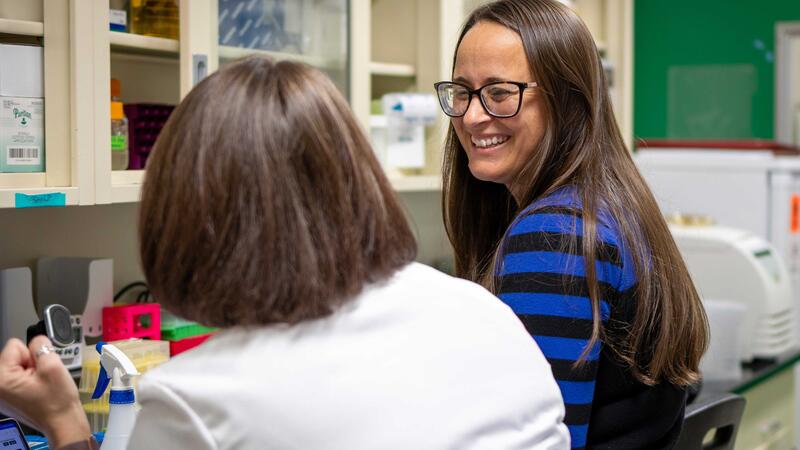News
Unraveling the mysteries of the plant microbiome
Three years after joining the Great Lakes Bioenergy Research Center, Michigan State University microbiologist Sarah Lebeis has been tapped to guide the center’s scientific research.
This week we sat down with Rebecca (Becky) Ong, Director of Graduate Programs and Associate Professor of Chemical Engineering at Michigan Technological University, as she shares her journey from her childhood love of plants to her groundbreaking research converting them into biofuels.
Great Lakes Bioenergy Research Center researchers Ben Hall and Daniel Parrell are the winners of the 2023 Outreach and Service Award in recognition of their contributions to the center’s mission.
Rock-licking teen to two-time All American track athlete to albedo expert. Today's guest, Cheyenne Lei, Great Lakes Bioenergy researcher, shares how her path as an international student-athlete combined with her passion for field research and mentorship led her to a Ph.D. in geography at Michigan State University.
Newly published research from Michigan State University demonstrates how to evaluate soil carbon stock changes more accurately. This calculation has significant implications on measuring the actual environmental benefits of regenerative agriculture practices and economic consequences through emerging carbon markets.
Troy Runge grew up around silos. As the new director of agricultural and life science research at the University of Wisconsin–Madison, he’s hoping to tear some down.
Commonly known as brewer’s yeast, Saccharomyces cerevisiae tends to get credit for bread, beer, wine, ethanol and just about any other product of fermentation.
Great Lakes Bioenergy Research Center scientist Shannon Stahl is one of two University of Wisconsin–Madison faculty elected to the prestigious National Academy of Sciences, one of the highest honors a scientist can receive.





